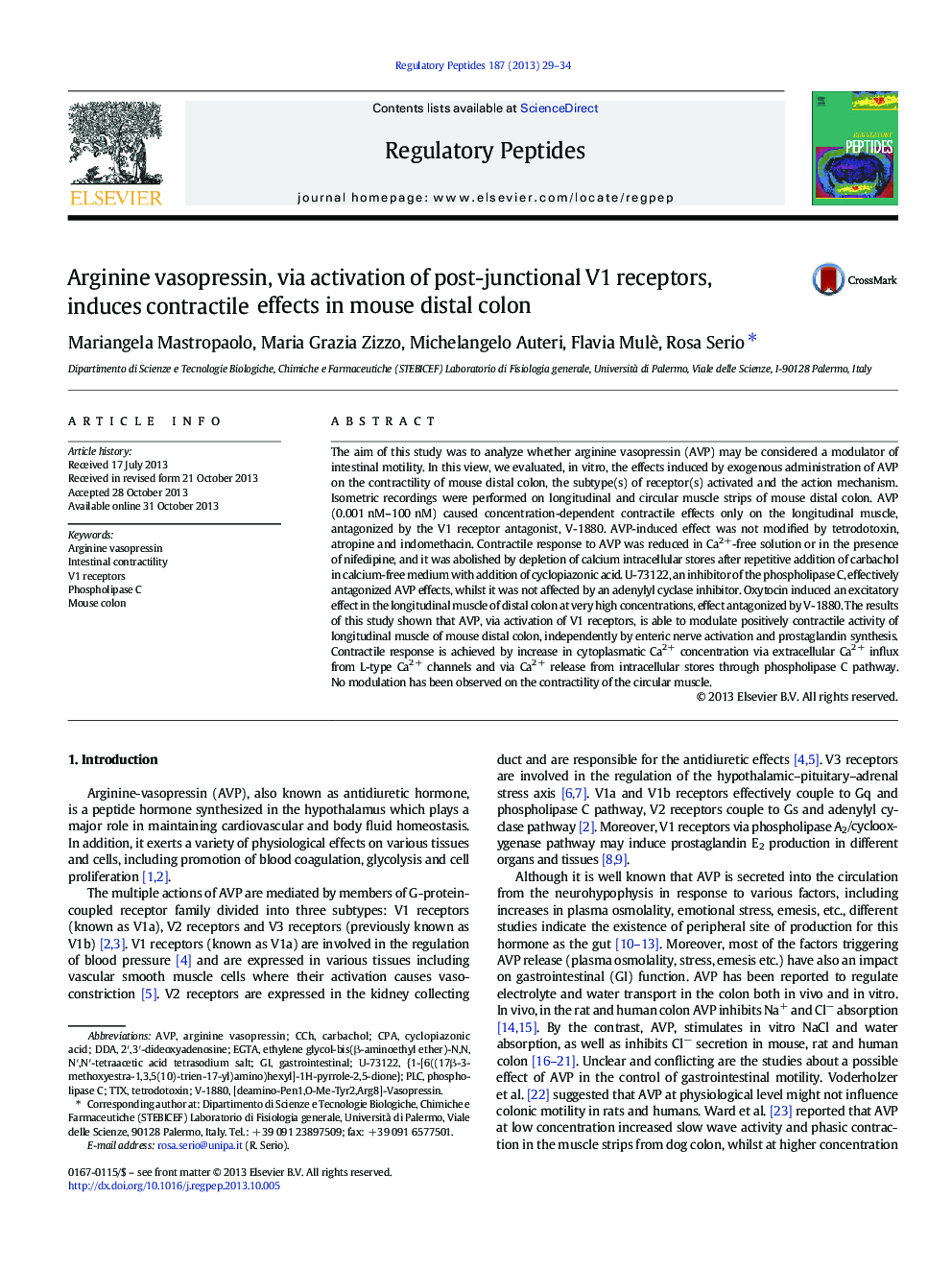| Article ID | Journal | Published Year | Pages | File Type |
|---|---|---|---|---|
| 2022457 | Regulatory Peptides | 2013 | 6 Pages |
•AVP positively modulates contractile activity of longitudinal muscle of mouse distal colon.•AVP-induced contraction is mediated by activation of postjunctional V1 receptors.•V1 receptor activation increases Ca2+ influx and release from intracellular stores.•V1 receptor activation leads to activation of phospholipase C.
The aim of this study was to analyze whether arginine vasopressin (AVP) may be considered a modulator of intestinal motility. In this view, we evaluated, in vitro, the effects induced by exogenous administration of AVP on the contractility of mouse distal colon, the subtype(s) of receptor(s) activated and the action mechanism. Isometric recordings were performed on longitudinal and circular muscle strips of mouse distal colon. AVP (0.001 nM–100 nM) caused concentration-dependent contractile effects only on the longitudinal muscle, antagonized by the V1 receptor antagonist, V-1880. AVP-induced effect was not modified by tetrodotoxin, atropine and indomethacin. Contractile response to AVP was reduced in Ca2 +-free solution or in the presence of nifedipine, and it was abolished by depletion of calcium intracellular stores after repetitive addition of carbachol in calcium-free medium with addition of cyclopiazonic acid. U-73122, an inhibitor of the phospholipase C, effectively antagonized AVP effects, whilst it was not affected by an adenylyl cyclase inhibitor. Oxytocin induced an excitatory effect in the longitudinal muscle of distal colon at very high concentrations, effect antagonized by V-1880. The results of this study shown that AVP, via activation of V1 receptors, is able to modulate positively contractile activity of longitudinal muscle of mouse distal colon, independently by enteric nerve activation and prostaglandin synthesis. Contractile response is achieved by increase in cytoplasmatic Ca2 + concentration via extracellular Ca2 + influx from L-type Ca2 + channels and via Ca2 + release from intracellular stores through phospholipase C pathway. No modulation has been observed on the contractility of the circular muscle.
